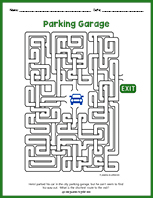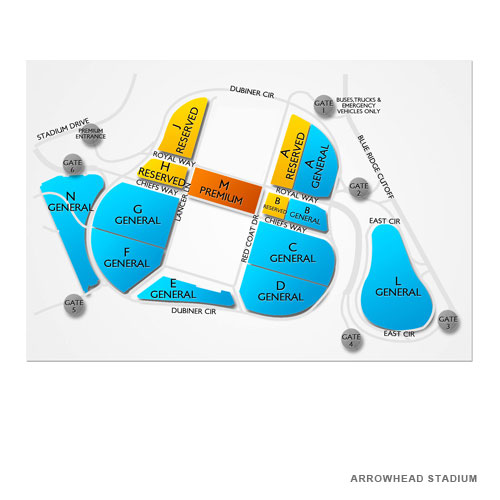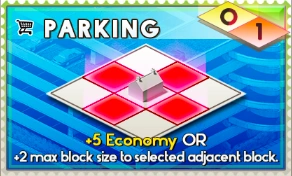Paradise Found, Parking Lost: Your Guide to Navigating Hawaii’s Beach Parking Maze

Hawaii. Just the name conjures up images of sun-kissed beaches, turquoise waters, and swaying palm trees. It’s a paradise, no doubt, but getting to those idyllic shores can sometimes feel like navigating a jungle of parking rules and regulations.
Don’t let the fear of finding a parking spot ruin your Hawaiian vacation. We’ve got you covered with this comprehensive guide to beach parking in Hawaii, packed with insider tips and tricks to help you find your perfect patch of sand, stress-free.
Related Articles: Paradise Found, Parking Lost: Your Guide to Navigating Hawaii’s Beach Parking Maze
- Miami Parking: A Guide To Navigating The Concrete Jungle
- Georgia On My Mind (and My Budget): Finding Free Parking For Your RV
- Florida’s Parking Wars: A Guide To Navigating The Commuter Jungle
- Save Your Sanity (and Your Wallet): Parking In Sandy Springs, GA
- Colorado Camping: Your RV’s Paradise Awaits!
The Parking Landscape: A Diverse and Sometimes Tricky Terrain
Hawaii’s beaches are diverse, and so are the parking options. From free street parking to paid lots, from permit-only zones to shuttle services, the landscape is a mix of convenience and complexity.
Here’s the lowdown on the most common parking scenarios:
-
Street Parking: The holy grail for budget-conscious beachgoers, street parking can be a bit of a gamble. Availability varies wildly depending on the time of day, day of the week, and the popularity of the beach. Be sure to check for parking restrictions, like no parking zones, time limits, and permit requirements.

Paid Parking Lots: These are a reliable option, especially for popular beaches. They offer a guaranteed spot, but come with a price tag. Fees can range from a few dollars to upwards of $20, depending on location and time of year.
-
Permit-Only Parking: Certain beaches, especially those close to residential areas, have restricted parking. You’ll need a permit, often available from the local government or homeowner’s association.
-
Shuttle Services: Some beaches, particularly those with limited parking, offer shuttle services. This is a great way to avoid the parking headache altogether and enjoy a scenic ride.

A Word of Caution: No matter where you park, be mindful of the following:

-
Read the signs: Parking regulations can be strict, and fines can be hefty. Always pay attention to signs, especially those indicating permit-only zones, time limits, and restricted parking areas.
-
Be respectful of local residents: Parking on residential streets can sometimes be a source of tension between visitors and locals. Be respectful of their property and avoid blocking driveways or parking in designated no-parking zones.
-
Pack your patience: Finding parking, especially during peak season, can be a challenge. Don’t get discouraged if you have to circle a few times or even try a different beach.
Beach Parking Hotspots: Navigating the Most Popular Destinations
Now let’s dive into specific beach parking scenarios in some of Hawaii’s most beloved destinations:
Oahu:
-
Waikiki Beach: Parking is notoriously scarce and expensive in Waikiki. Street parking is limited, and paid lots are often packed. Your best bet is to park in a nearby hotel or resort and walk or take a bus.
-
Lanikai Beach: This idyllic beach boasts stunning views and calm waters, but limited parking. Street parking is available, but it fills up quickly. Consider arriving early or using the paid parking lot at the nearby Kailua Beach Park.
-
Hanauma Bay: Parking is limited at this popular snorkeling spot. You can park in the paid lot, but it’s often full, especially on weekends. The best option is to arrive early or take the shuttle from the nearby parking lot.
Maui:
-
Ka’anapali Beach: This stretch of beach offers plenty of parking options, including paid lots and street parking. However, parking can be challenging during peak season.
-
Wailea Beach: Parking is limited at this upscale beach. There are paid lots and some street parking, but it fills up quickly. Consider parking in a nearby hotel or resort and taking a shuttle.
-
Makena Beach (Big Beach): This popular beach offers a large paid parking lot, but it can get crowded. Arrive early or consider parking at the nearby Makena State Park and taking a short walk.
Big Island:
-
Punalu’u Black Sand Beach: Parking is limited at this unique beach. There is a small paid parking lot, but it fills up quickly. Consider arriving early or parking at the nearby Punalu’u Black Sand Beach State Park and taking a short walk.
-
Kealakekua Bay: Parking is available at the nearby Kealakekua Bay State Historical Park. There are also a few paid lots and some street parking.
-
Hapuna Beach State Recreation Area: This popular beach offers a large paid parking lot, but it can get crowded. Consider arriving early or parking at the nearby Hapuna Beach Prince Hotel and taking a shuttle.
Kauai:
-
Poipu Beach: Parking is available at the nearby Poipu Beach Park, but it can get crowded. There are also a few paid lots and some street parking.
-
Hanalei Bay: Parking is limited at this picturesque bay. There are a few paid lots and some street parking, but it fills up quickly. Consider arriving early or parking at the nearby Hanalei Town and taking a shuttle.
-
Ke’e Beach: Parking is limited at this beach, which is the starting point for the Na Pali Coast State Wilderness Park. There is a small paid parking lot, but it fills up quickly. Consider arriving early or taking the shuttle from the nearby Kilauea Lighthouse.
Tips for Finding That Perfect Parking Spot
-
Arrive early: This is especially true for popular beaches, especially during peak season. The earlier you arrive, the better your chances of finding a good spot.
-
Use parking apps: Apps like ParkMobile and SpotHero can help you find available parking spaces in real-time, saving you time and frustration.
-
Consider alternative transportation: If you’re staying in a hotel or resort, see if they offer shuttle services to the beach. You can also take a bus or taxi, or even rent a bike.
-
Be flexible: If you can’t find parking at your first choice beach, don’t be afraid to explore other options. There are plenty of beautiful beaches in Hawaii, and you’re sure to find one that suits your needs.
-
Pack your patience: Finding parking can be a challenge, especially during peak season. Don’t get discouraged if you have to circle a few times or even try a different beach.
Beach Parking: A Balancing Act of Convenience and Conservation
While finding parking is a crucial part of your beach experience, it’s also important to be mindful of the impact your car has on the environment. Here are a few ways to be a responsible beachgoer:
-
Park in designated areas: Avoid parking on sand dunes or in sensitive coastal areas. These areas are fragile ecosystems that are easily damaged by vehicle traffic.
-
Keep your car clean: Avoid spilling gasoline or other fluids on the ground. These substances can contaminate the soil and water.
-
Dispose of trash properly: Don’t leave trash in your parking space or on the beach. Dispose of it in designated trash cans.
-
Be aware of your surroundings: Watch out for wildlife, especially during nesting season. Avoid disturbing animals or their habitats.
-
Support sustainable transportation: Consider using public transportation, biking, or walking to get to the beach. These options are better for the environment and can help reduce traffic congestion.
FAQ: Solving Your Beach Parking Puzzles
Q: Are there any free parking options at beaches in Hawaii?
A: Yes, free street parking is available at some beaches, but it’s often limited and can be difficult to find. Check for signs indicating parking restrictions and time limits.
Q: How much does parking at a beach in Hawaii cost?
A: Parking fees vary depending on the location and time of year. They can range from a few dollars to upwards of $20. Check with the individual beach or parking lot for current rates.
Q: Can I park at a hotel or resort and walk to the beach?
A: Yes, many hotels and resorts offer parking for their guests, and some allow non-guests to park for a fee. Check with the individual hotel or resort for their parking policies.
Q: Are there any apps that can help me find beach parking?
A: Yes, apps like ParkMobile and SpotHero can help you find available parking spaces in real-time. These apps can also help you compare prices and reserve parking in advance.
Q: What are the best times to go to the beach to avoid parking crowds?
A: The best times to go to the beach to avoid parking crowds are early in the morning or late in the afternoon. Weekdays are generally less crowded than weekends.
Q: What should I do if I can’t find parking at the beach I want to go to?
A: Don’t be afraid to explore other options. There are plenty of beautiful beaches in Hawaii, and you’re sure to find one that suits your needs. You can also consider taking a shuttle or bus, renting a bike, or walking.
Q: Are there any parking restrictions at beaches in Hawaii?
A: Yes, there are parking restrictions at many beaches in Hawaii. These restrictions may include time limits, permit-only zones, and no parking zones. Always read the signs carefully and park in designated areas.
Q: What are the consequences of parking illegally at a beach in Hawaii?
A: Parking illegally at a beach in Hawaii can result in a hefty fine. In some cases, your car may even be towed. Always park legally and be respectful of parking regulations.
Embrace the Journey: Parking as Part of Your Hawaiian Adventure
Finding parking in Hawaii can be a bit of a challenge, but it’s all part of the adventure. Don’t let it stress you out. Use our tips, embrace the journey, and you’ll be rewarded with the beauty of Hawaii’s stunning beaches. Just remember to be a responsible beachgoer, respect local regulations, and leave no trace but your footprints in the sand. Enjoy your Hawaiian paradise!

Closure
Thus, we hope this article has provided valuable insights into Paradise Found, Parking Lost: Your Guide to Navigating Hawaii’s Beach Parking Maze. We hope you find this article informative and beneficial. See you in our next article!


